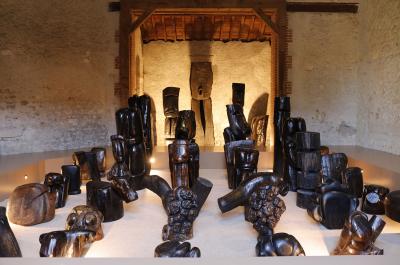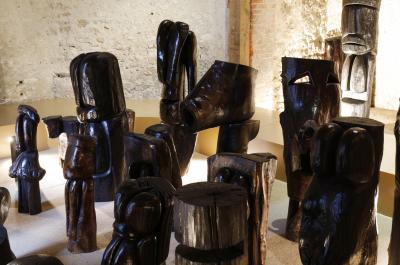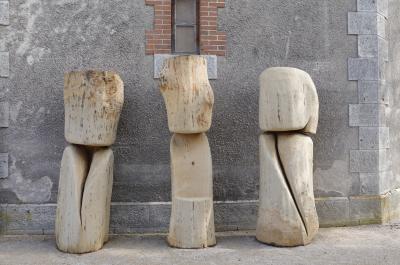Bee Barn
Wang Keping
published at 26/06/2018
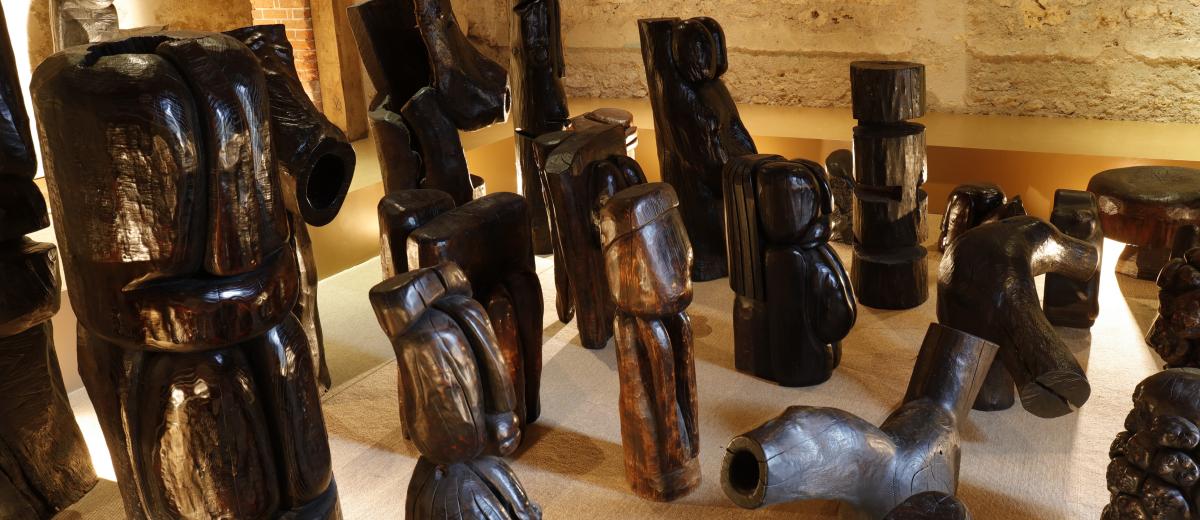
Chinese artist Wang Keping is self-taught and has lived in France for many years. He has always used traditional techniques for his charred wooden sculptures in keeping with the tradition of his country. His round, voluptuously shaped works are polished, understated - almost black - with a patina that intentionally allows venules and cracks in the wood to appear.
The artist feels passionate about what he calls “the flesh of forests”. He follows the natural curves of the wood to produce immensely sensual forms.
With their figures cut mid-body, like trunks, his sculptures seem to be rooted in themselves.
“Each piece of wood stirs up feelings in me, inspires me”, “I see the forms in the wood”, “the forms thrive in my imagination”. Wang Keping.
The artist treats us to a brand new, extraordinary collection at Chaumont-sur-Loire in the Bee Barn, where the sculptural alignments and buildup of effects strengthen the powerful emotion of these strikingly dense works. More than forty sculptures in different shapes and sizes, with half-animal, half-human plant forms, will be on show to visitors for contemplating from above.
Some of the sculptures on display are made from oak from Chassepaille Forest, which was once owned by Princess de Broglie.
BIOGRAPHICAL NOTES
Wang KEPING
CHINA
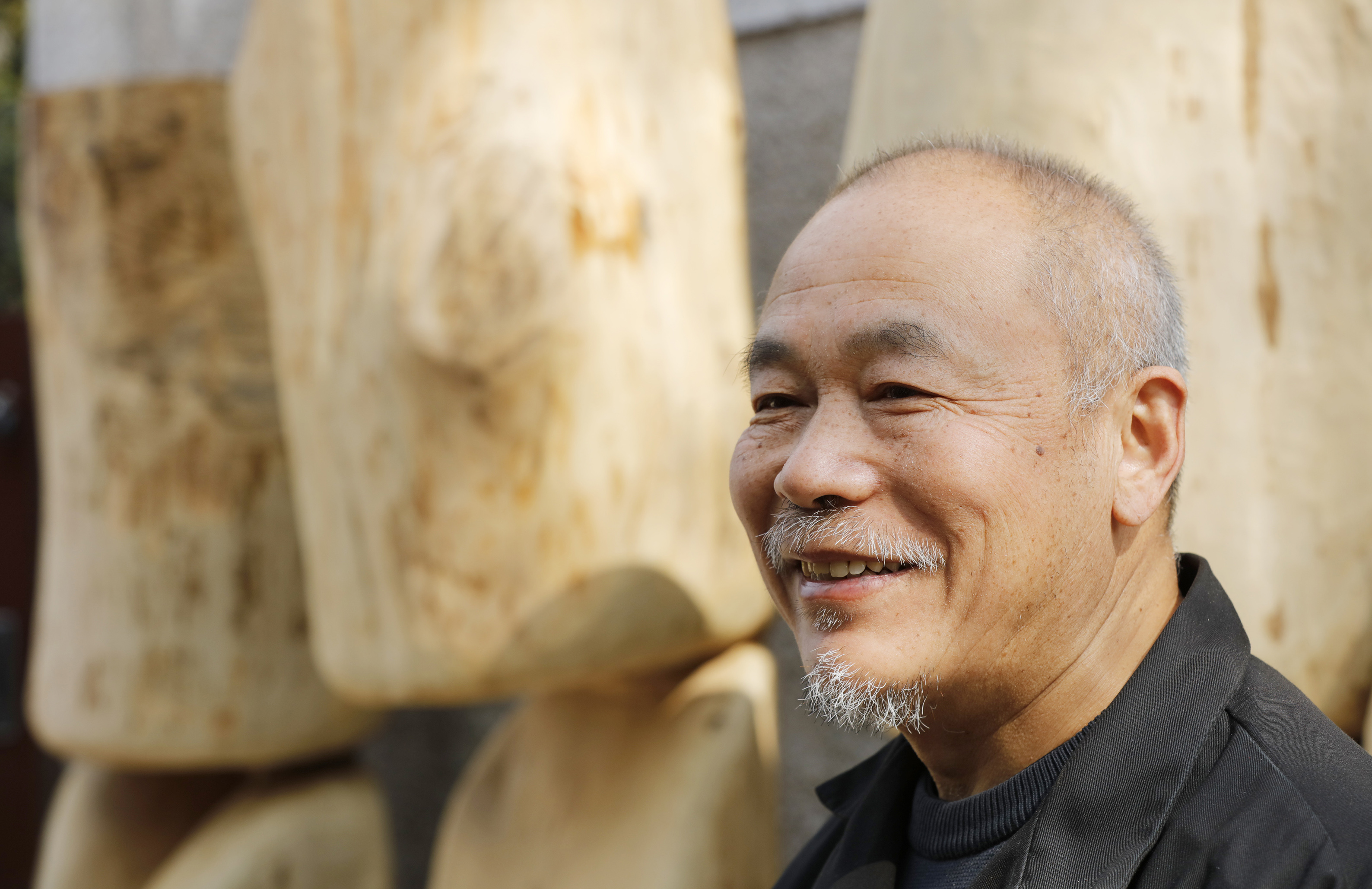
Wang Keping au Domaine de Chaumont-sur-Loire, 2016 - © Éric Sander
Born in Beijing in 1949, Wang Keping has lived and worked in Paris since 1984.
In the late 1970s, along with Huang Rui and Ma Descheng, he founded the “Group of Stars” (Xing Xing), an anti-establishment art movement and the first group of unofficial Chinese artists... “At the time we were the only glimmers of light in an endless night. What's more, the stars that look so small from afar can turn out to be enormous planets”. They symbolised the first generation of contemporary Chinese artists.
In September 1979, he took part in an exhibition on the railings of the Beijing Fine Arts Academy. In 1984, he was forced to leave because of his anti-conformist work. He decided to settle in France. His sculptures were exhibited in the Centre Pompidou in 1989.
He is represented by the Zürcher Gallery, Paris/New York and the 10 Chancery Lane Gallery, Hong Kong.
